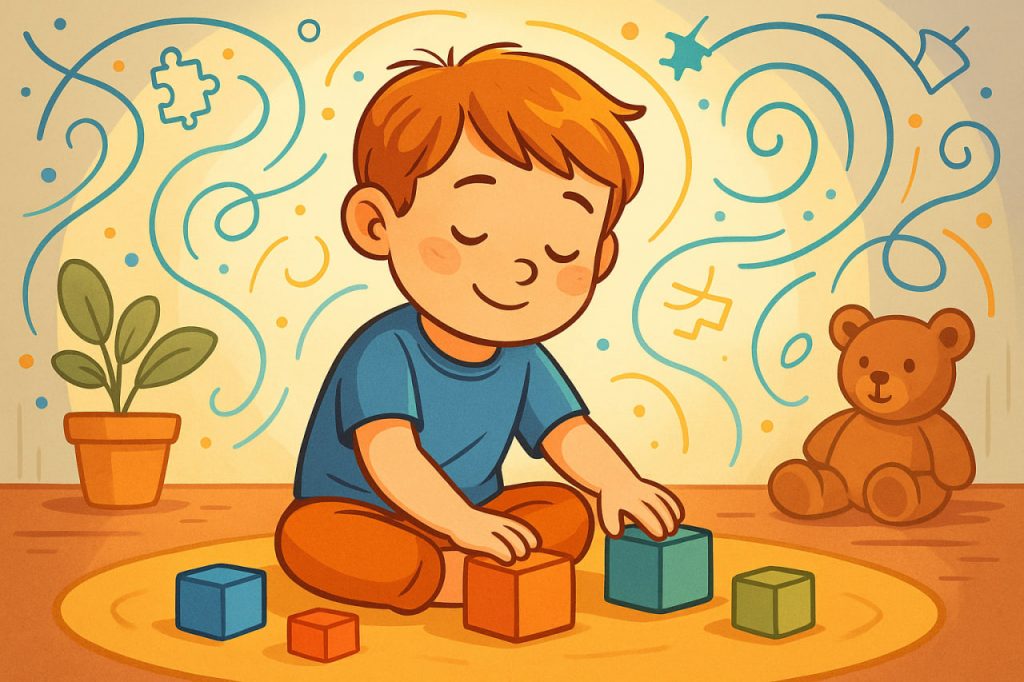Autism, or Autism Spectrum Disorder (ASD), is not a disease but a different way the brain processes information, communication, and interaction with the world. People with autism experience and understand their environment in unique ways — often with heightened perception, deep focus, or sensitivity to details others may overlook. Recognizing autism as a spectrum means embracing the diversity of human minds rather than trying to fit everyone into one pattern.
What Is Autism?
Autism Spectrum Disorder is a neurodevelopmental condition that affects how a person perceives, communicates, and interacts with others. The word spectrum means that symptoms and strengths vary widely among individuals — some people may need significant support in daily life, while others live independently and excel in specific fields like mathematics, music, or art.
Autism typically appears in early childhood, though its signs can be subtle at first. It is lifelong, but with understanding and support, autistic individuals can thrive and develop their potential fully.
Common Characteristics
While each person with autism is unique, there are shared traits often observed across the spectrum:
- Differences in communication: Some individuals may speak little or use alternative ways of expression such as gestures, writing, or assistive devices. Others may have advanced vocabulary but find social conversation challenging.
- Repetitive behaviors and routines: Many people with autism find comfort in structure, repetition, or focusing deeply on specific interests.
- Sensory sensitivity: Bright lights, loud sounds, or certain textures may cause discomfort, while soft music or colors can bring calm.
- Unique learning patterns: Some have exceptional memory, visual thinking, or analytical skills.
These differences should not be seen as limitations, but as variations of the human brain — each with its own strengths and challenges.
Causes and Risk Factors
Scientists have not found a single cause of autism. Research suggests it results from a combination of genetic and environmental factors that influence brain development before or shortly after birth.
Autism is not caused by parenting style, vaccines, or emotional trauma — a misconception long disproved by science.
Certain factors may increase the likelihood of autism:
- Genetic predisposition (autism may run in families).
- Advanced parental age during pregnancy.
- Premature birth or low birth weight.
Diagnosis and Early Support
Early detection is key to helping a child with autism develop communication and social skills. Pediatricians and specialists use behavioral observations and standardized assessments to evaluate symptoms.
Signs may appear between 18 months and 3 years of age, such as lack of eye contact, delayed speech, or repetitive movements.
Therapies can include:
- Speech and language therapy for communication development.
- Occupational therapy to improve sensory and motor skills.
- Behavioral support to strengthen social adaptation.
- Family training to help parents create a supportive environment.
These approaches don’t aim to “cure” autism but to help individuals express themselves and navigate the world with confidence.
Life with Autism
Many autistic people achieve remarkable success in their chosen fields. Their focused interests, precision, and creativity have led to breakthroughs in technology, science, and the arts. However, they often face misunderstanding or discrimination, making social inclusion and awareness vital.
Workplaces and schools that value neurodiversity benefit from diverse perspectives and innovative thinking. Society’s role is to provide understanding — not conformity.
Modern Perspective: Neurodiversity
The concept of neurodiversity promotes the idea that differences in brain function — such as autism, ADHD, or dyslexia — are natural variations of humanity, not disorders to be “fixed.” This movement emphasizes acceptance, equal opportunities, and respect for individuality.
It’s not about changing autistic people to fit the world — it’s about changing the world to include them.
Interesting Facts
- The term autism comes from the Greek word autos, meaning “self,” describing inward focus.
- Famous individuals thought to have exhibited autistic traits include Albert Einstein, Isaac Newton, and Nikola Tesla.
- Autism affects about 1 in 100 children worldwide, according to the WHO.
- Many autistic adults prefer the term “autistic person” instead of “person with autism,” emphasizing identity rather than condition.
Glossary
- Autism Spectrum Disorder (ASD) — a neurodevelopmental condition affecting communication and social interaction.
- Neurodiversity — the idea that brain differences are natural and valuable variations of the human mind.
- Sensory sensitivity — heightened reaction to sound, light, touch, or smell.
- Early intervention — specialized support provided in childhood to enhance skills and adaptation.
- Repetitive behaviors — repeated actions or patterns that bring comfort or help regulate emotions.


